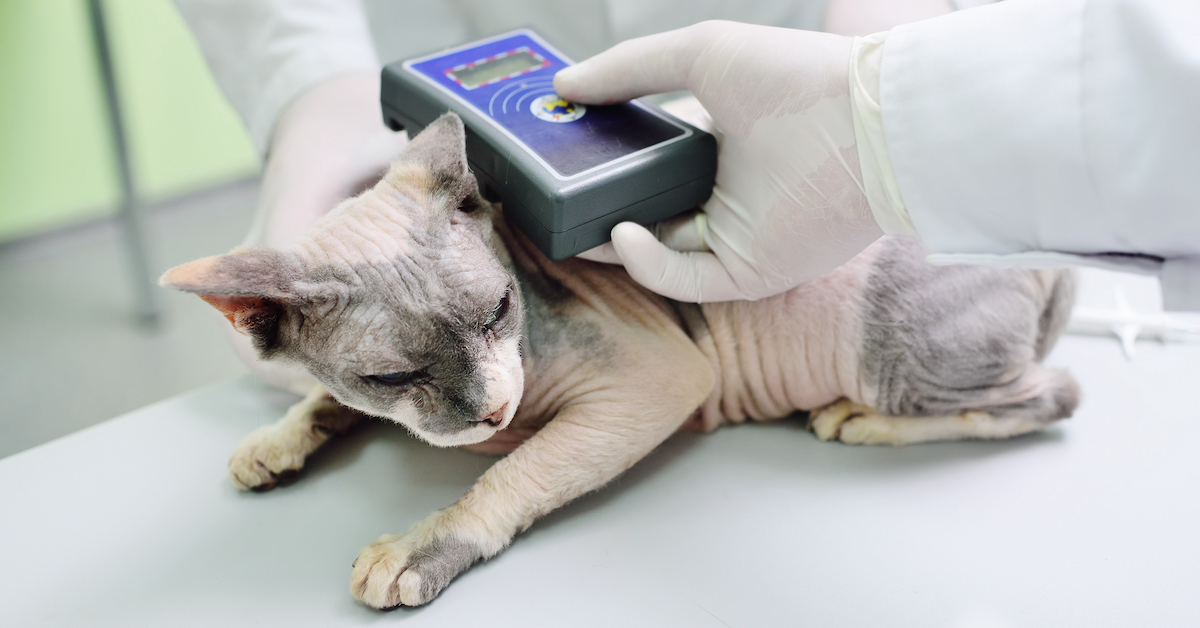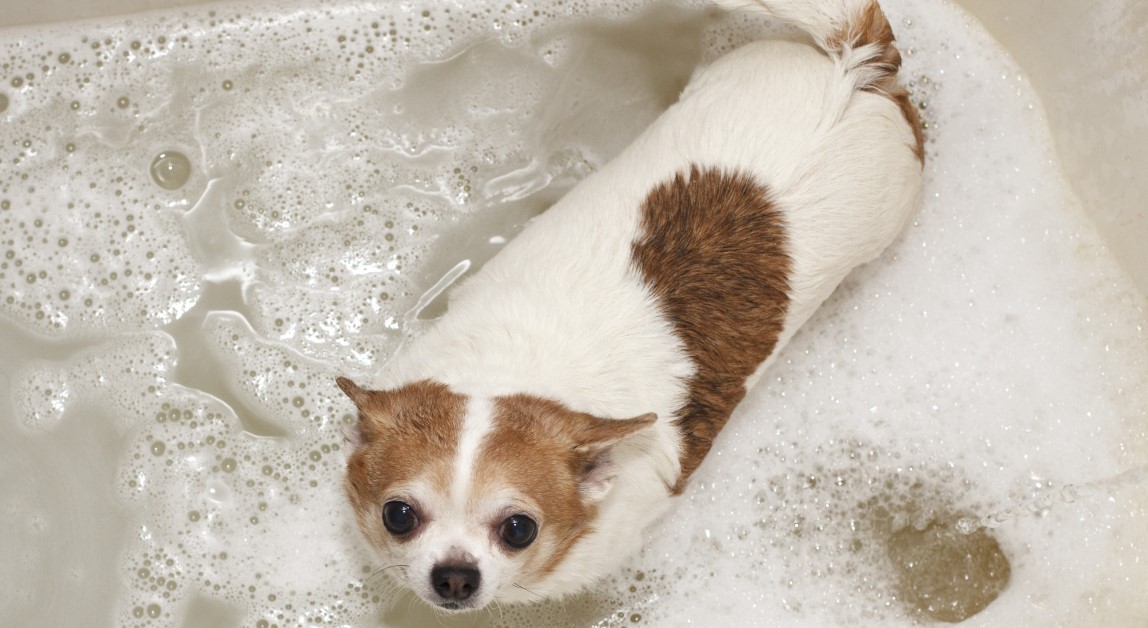8 Reasons to Microchip Your Pet
Microchips provide pets with a permanent form of identification used to help return lost or stolen pets to their owners.

Microchips have been found to significantly increase the likelihood of pet owners finding their lost or stolen pets. Unfortunately, just 5 to 8 percent of animals in the U.S. are microchipped, according to research conducted by Ohio State University.
A pet microchip uses radio frequency identification (RFID) technology to transmit an ID number stored within the microchip. This ID number can be retrieved by using a scanning device commonly found in most vet clinics and animal shelters. The unique ID number is then placed in a database to obtain the owner’s name and contact information. Microchips are a permanent method of electronic identification, meaning they will generally last throughout your pet’s lifetime.
Pet microchipping is a simple, fast, and inexpensive procedure that every pet owner should consider. Learn more about animal microchipping and why you should get your pet microchipped.
1. Increase Your Odds of a Happy Reunion
Approximately 10 million pets are lost in the U.S. each year with millions ending up in animal shelters across the country, according to American Humane. Microchipping can help drastically increase your odds of reuniting with a lost or stolen pet. When your pet is microchipped, anyone who finds your pet can bring him to a veterinary office or animal shelter to have the animal scanned for a microchip. Keeping your contact information updated in the microchip database allows you to be easily notified if your pet is found.
2. Microchipping is Nearly Painless
There is a common misconception that microchipping is a painful process for cats and dogs. In reality, the process is nearly pain-free and most vets do not need to use any type of anesthetic. However, if you are concerned about this minimally-invasive procedure, you can opt to have the microchip inserted when your dog is undergoing a different procedure that requires anesthesia, such as a spay, neuter, or dental cleaning.
3. The Identification Is Permanent
Microchips used in pets are considered a permanent form of identification. While they may be no larger than a grain of rice, microchips contain tiny transmitters that allow scanners to detect unique ID numbers. Microchips do not require batteries and will continue to function throughout your pet’s lifespan. As the microchip is inserted under the animal’s skin, there is also no risk of it being dropped or removed by a person. Microchips also contain no working parts, meaning they will not “break down” or require replacing.
4. Reduce the Burden on Animal Shelters
Each year, more than 6.5 million pets enter animal shelters nationwide, according to the ASPCA. Most animal shelters only have a limited amount of space for animals and once that space has reached capacity, pets must be taken to other shelters or euthanized. Having your pet microchipped helps lessen the burden on animal shelters by ensuring that pets are returned to their rightful owners and not placed in crowded shelters.
5. Updating Contact Information Is Easy
Over the course of your pet’s life, there is a chance that you may move or get a new phone number. When this happens, you’ll want to promptly update your contact information in the microchip database. This ensures that if your pet is ever found, you can be easily contacted using the updated information available. Updating these records is usually as simple as contacting your microchip provider. Some microchip providers offer online portals where pet owners can log in and change or add contact information.
6. Protect Your Pet from Theft
While you never want to think about your beloved pet being stolen, there is always a risk that someone could steal your pet and claim it as their own. When this happens, you want to have the proper evidence that shows that you are the true owner. Having documentation is not always enough as some animals look very similar and the thief could alter your pet’s appearance. While collars and ID tags can be removed by the thief, microchips are permanent, providing the evidence you need to show ownership.
7. Microchipping is Affordable
One of the biggest concerns that pet owners have when contemplating microchipping their pet is whether or not they can afford it. Visits to a vet can be expensive, even for routine services. However, most people will find microchipping to be affordable and well worth the investment. According to Outward Hound, the average cost of microchipping is $50. This price includes the injection procedure, as well as the microchip registration. There is no annual fee for microchips, meaning you pay for the service only once.
8. Pet Owners Receive Peace of Mind
You can’t put a price on peace of mind. Pet owners that choose to have their pets microchipped often experience greater peace of mind compared to those who choose not to chip their cat or dog. Although a microchip cannot guarantee that your lost cat or dog will be returned to you, it does drastically improve your odds of being reunited. Since microchips typically last a lifetime, one small payment and a quick procedure are all that stand between you and peace of mind that your pet is protected.
Microchipping is an innovative technology that has helped countless pet owners find their lost or stolen pets. Every pet owner wants to know that they’re doing everything they can to keep their pet safe. Microchipping is a simple and affordable way to accomplish this important goal.
Ready to start saving money on pet wellness care?
Then take a look at Mint Wellness, the pet wellness plan that provides fast reimbursement on routine pet care. Save on vaccinations, wellness exams, preventatives, dental, and more!
Learn More


